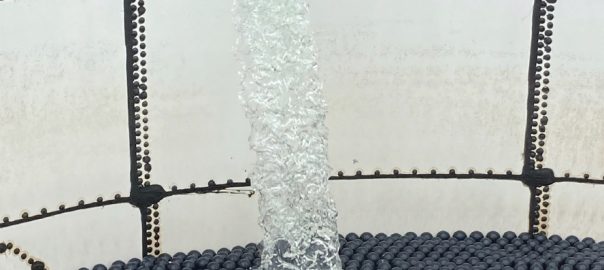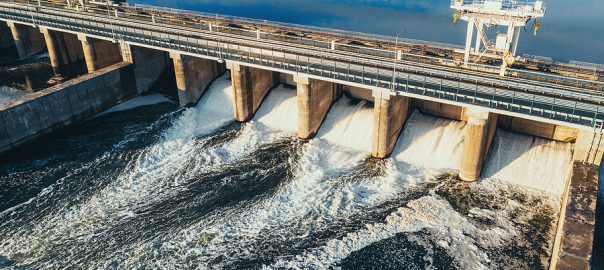
On June 15th, the EPA added five new chemicals to their list of chemicals that federal, state, and local agencies must monitor for at Superfund sites across the U.S. Superfund sites are sites in the U.S. that are contaminated in some way, often it’s where manufacturing sites, landfills, or mines created tremendous pollution in the soil and groundwater.
In the 1980s, the U.S. Congress established the Comprehensive Environmental Response Compensation and Liability Act requiring responsible parties to clean up their sites or pay the EPA to clean them. If the company or responsible parties are no longer in business or alive, the Superfund money is used in the clean-up.
In addition, the EPA is making it known that the goal is to get these chemicals out of public water sources as part of a plan to make drinking water across the nation safer for everyone. States and territories are advised to apply for grants to address these five chemicals.
These chemicals have carcinogenic potential, and it’s believed they could increase the risk of cancer for animals and humans. They also have non-cancerous effects, such as damage to the liver, the kidneys, and the immune system. By lowering exposure, it can help lower the risk of chronic health conditions that drive up healthcare costs and shorten a person’s longevity.
Several studies have come to light that have raised concern. One is that children exposed to these chemicals are not building immunities to diseases like diphtheria and tetanus after vaccines. Exposure to GenX chemicals is causing lesions on the livers of mice, and pregnant mice are giving birth to babies with deficient thyroxine levels, which causes thyroid disease.
In order to lower exposure to them, the EPA is setting its sights on removing as much of them as possible in drinking water, which in turn can lower the amount found in foods that are processed or contain water.
What does this mean for you? It may not mean anything. But, industrial and food processing plants may need to take a closer look to see if their industrial wastewater systems are ready to monitor for these chemicals. Down the road, water treatment plants may need to start monitoring and removing them, too.
What Are the Five Additions?
Several chemicals are already monitored, but some were created more recently or have avoided careful monitoring. So, what are these GenX chemicals and PFAs that the EPA is asking to closely monitor? Why are they being watched?
Hexafluoropropylene oxide dimer acid (HFPO-DA)
HFPO-DA is not biodegradable. It’s found in food packaging, carpets, fabrics, and foams used to put out fires. Once it’s in water, it’s there until filtration removes it. Some states are being proactive and adding HFPO-DA to their drinking water standards.
For example, Wisconsin has a recommended level of 300 ppt. Michigan set standards to 370 ppt in 2020. North Carolina found higher levels of it in surface and drinking water around Cape Fear River and established drinking water goals as a result.
Perfluorooctanesulfonic acid (PFOS)
PFOs date back to the 1940s when 3M started making them, and they became a key component of Scotchgard. When they were found in human blood samples in the 1960s, it was first believed it was a related chemical. But, in the 1990s, PFOs were found in donated blood in blood banks. It wasn’t until 2000 that the chemical started to get phased out in the U.S.
It’s a problem as even wastewater treatment methods are unable to break down PFOs. They just don’t degrade.
Perfluorooctanoic acid (PFOA)
The use of PFOA dwindled in 2002, but until then, it was widely used as a binder for coatings like Teflon or paint products designed to resist stains, oil, and water. As they resist water and heat, they don’t degrade.
One study looked at more than 2,000 people’s blood samples; almost every sample had PFOAs in the blood. The effects on health are ongoing, but some studies found that lab animals that were given large amounts suffered liver damage.
Perfluorononanoic acid (PFNA)
PFNAs are surfactants found in everyday items such as cosmetics. They don’t degrade and are showing up in the blood of animals and humans. As a result, some states are starting to ban their use or require drinking water standards.
In 2020, California banned the use of PFNAs in cosmetics. That same year, New Jersey became the first state to set drinking water standards to 14 ppt. A couple of months later, Michigan set a level of 8 ppt, though the U.S. EPA hadn’t set any requirements yet.
Perfluorohexane Sulfonic acid (PFHxS)
This is the most common of all the synthetic chemicals known as PFASs. It’s been banned in many areas, but it’s still showing up in the environment. It was found in fire-fighting foams, textiles, metal coatings, and polishes.
The U.S. hasn’t set limits as of 2019, but states are taking it into their own hands. Minnesota was one of the first, aiming for 27 ppt. Michigan set their limit of 51 ppt in 2020.
What States Do Regulate These Chemicals?
Just because the EPA hasn’t taken action yet doesn’t mean you’re off the hook. These states have limits in place for public drinking water.
- Alaska – PFOS and PFOA
- California – PFOA and PFOS
- Colorado – PFOA and PFOS
- Connecticut – PFOA, PFOS, PFHxS, PFNA, and PFHpA
- Delaware – PFOA and PFOS
- Maine – PFOA and PFOS
- Massachusetts – PFOA, PFOS, PFHxS, PFNA, PFHpA, and PFDA
- Michigan – PFNA, PFOA, PFOS, HFPO-DA, PFBS, and PFHxA
- Minnesota – PFOS, PFOA, PFHxS, PFBS, and PFBA
- New Hampshire – PFOA, PFOS, and PFHxS
- New Jersey – PFNA, PFOS, and PFOA
- New Mexico – PFOA and PFOS
- New York – PFOA and PFAS
- North Carolina – GenX
- Ohio – PFNA, PFHxS, PFOS, PFOA, GenX, and PBFS
- Vermont – PFOA, PFOS, PFHxS, PFNA, and PFHpA
You may already be in a state where you have to work with the limits state agencies have set. Not every state has policies though. What if you don’t. What does this mean for your water treatment plant?
Right now, these are advisories. Monitoring these contaminants is helping shape policies on lowering them to treated water. Those policies are expected to come out in the fall. Will your wastewater or public water treatment plant need to take measures to better clean the water? It’s almost a certainty that that will come next. More will be known in the fall when new guidelines come out.
Until then, the government released money to help towns and cities improve their infrastructure. Take advantage of these grants and start looking toward the future. Systems with the best filtration methods will find more of these chemicals get removed and lead to safe water for everyone in their region.
Lakeside Equipment can help you look at your existing water treatment plant and see if there are ways to improve efficiency, performance, and save money on energy bills. Reach out to us to discuss what you wish you could change about your current system. Our engineers are happy to talk about ways to save money and improve performance.





